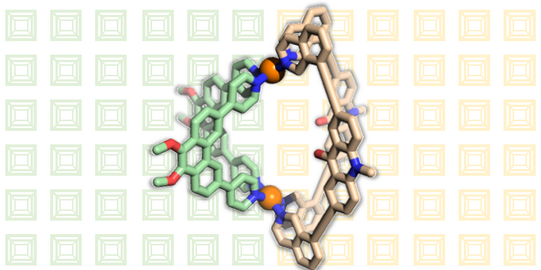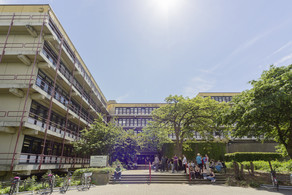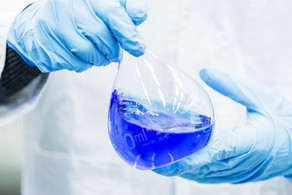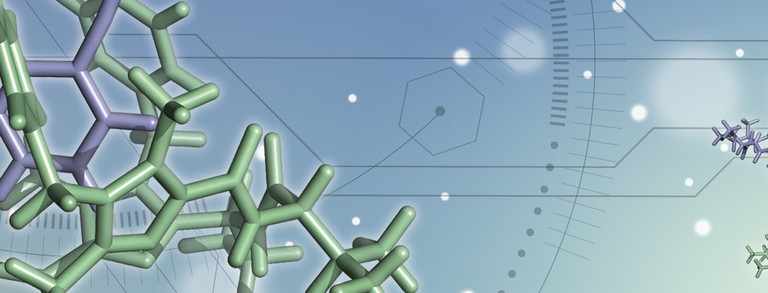Research
Metal-Mediated Self-Assembly of Nano-Cages and DNA G-Quadruplexes
Our work is motivated by the structural and functional complexity we find in nature’s biochemical machinery. We take delight in designing and constructing artificial devices, aggregates and complex systems on a molecular scale. We create functional molecules and supramolecular assemblies by a bottom-up assembly which serve as foundation for new diagnostic tools, selective reagents and stimuli-responsive materials.
We are thrilled by the progress in self-assembly of nanostructures under thermodynamic control, but most known architectures consist of only few different components. How can we add even higher levels of complexity through smart combination of different building blocks, assembling in non-statistical manner and acting together to show emergent behavior?
Can we trigger state changes in self-assembled systems via stimuli-responsive elements, make them operate away from thermodynamic equilibrium, perform cascaded interconversions, transfer information on the nanoscale, e.g. by propagating chirality via non-covalent interactions?
Will self-assembly strategies developed in our lab allow chromophores and redox centers to be positioned in space to control exciton and electron transfer processes?
Can we make artificial nanoscale objects interact with biomolecules and serve as diagnostic tools or mediators for biochemical processes?
Can bio-artificial hybrid compounds exploit the benefits from both the natural world as well as man-made technology? In this sense, can the biologically proven concept of selective catalysis in a nano-confined metallo-protein pocket be transferred to artificial host systems or tailor-made oligonucleotide folds equipped with metal-binding sites?
Metallo-supramolecular assemblies form the basis of our research. We have developed a large family of self-assembled coordination cages, including hosts with a range of cavity sizes and shapes, mechanically interlocked systems showing allosteric guest binding behavior and chiral recognition environments. Our current focus is set on dye-based assemblies, light-switchable and -harvesting systems and catalytically active architectures.
Our specialty are heteroleptic assemblies, formed under integrative self-sorting conditions along non-statistical routes. They form the basis for multifunctional nanostructures consisting of a set of distinguishable components, combined in a modular and synthetically simple way. Examples below show how we implement photoswitches as chiral information carriers, create new amphiphiles from anisotropic coordination cages and use bowl-shaped hosts as supramolecular protecting groups to control the functionalization of fullerenes.
A further section of our group synthesizes ligand-modified DNA G-quadruplexes able to carry transition metal ions in their loop regions to serve as tunable enantioselective catalysts, switchable binding systems and highly rigid EPR labels. Our studies on the chiroptical recognition of DNA secondary structures by dye-functionalized helicates bridge both of these fields.
Our lab combines a profound expertise in the synthesis of functional organic building blocks with a toolbox of metal-mediated assembly strategies, tailored application of non-covalent interactions and implementation of stimuli-responsive elements reacting to light or chemical inputs. Besides multistep organic synthesis, coordination chemistry, automated solid-phase preparation of DNA and modern purification methods (recycling GPC, chiral HPLC), we employ a wide range of analytical tools to characterize the supramolecular systems, including dynamic NMR, ion mobility mass spectrometry, single crystal X-ray diffraction, isothermal titration calorimetry, chiroptical methods (circular dichroism, circularly polarized luminescence). We use computational methods to design new assemblies, compare energies of isomeric structures, determine gas phase collisional cross sections and various spectroscopic properties.
The fruits of our work are meant to contribute fundamental knowledge to the fields of non-covalent interactions (interplay of effects in complex systems, temporal development under stimuli-response, competitive binding), multi-component self-assembly (entropy and strain effects, solvation and templation, constitutional dynamic libraries) and DNA nanotechnology (metal-base pairing in non-duplex DNA systems, control over oligonucleotide topologies, rational enantioselective catalysis).
We further aim to demonstrate that increasing structural and functional complexity of supramolecular systems can be achieved based on rational design rather than serendipitous findings. Finally, concepts and compounds arising from our research are evaluated in target-oriented development rounds for exploring their application potential. Our short-term goals include the development of new reagents for fullerene chemistry, chiroptical and EPR probes for biopolymers as well as modular catalysts. On the long term, we see potential benefit for the fields of molecular biology, diagnostics, intelligent materials as well as molecular electronics and photovoltaics.
Find out more about our projects on the following page. The following shortcuts lead to our current focus areas.

Cage Assembly, Ligand Functionalization and Host-Guest Studies

Non-Statistical Assembly Strategies for Multifunctional Cages

Selective Recognition, Confined Catalysis and Adaptive System Behavior






